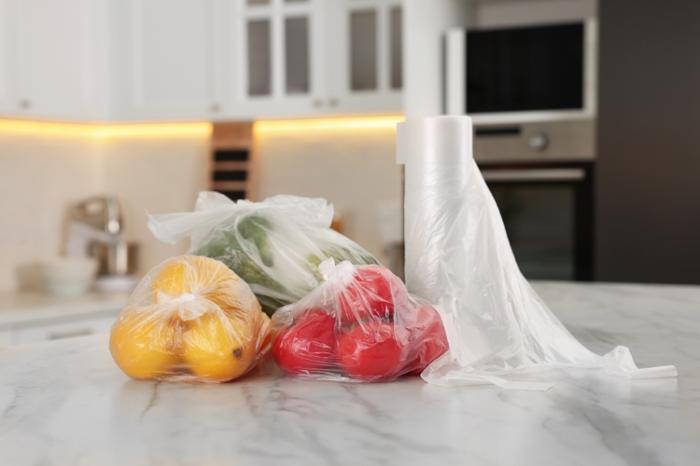FOOD PACKAGING

Food Packaging
Packaging plays a crucial role in prePackaging plays a crucial role in preserving the freshness and extending the shelf life of various food products, especially perishable items like meat, vegetable, and fruit. Different types of food have specific requirements, and packaging solutions are designed to meet those needs. Here are some commonly used packaging methods for fresh foods:
Modified Atmosphere Packaging (MAP):
Used for: Fruit, vegetable, meat, seafood.
How it works: MAP involves adjusting the mix of gases within the package to slow down the ripening process and inhibit the growth of spoilage microorganisms. This is achieved by replacing the air inside the package with a mixture of gases such as nitrogen and carbon dioxide.
Vacuum Packaging:
Used for: Meat, cheese, fish, and some vegetable.
How it works: Vacuum packaging removes the air from the package, creating a vacuum seal. This helps to slow down the oxidation process and reduce the growth of aerobic bacteria, thus extending the shelf life.
Aseptic Packaging:
Used for: Liquid products like fruit juices, soups, sauces.
How it works: Aseptic packaging involves sterilizing the food and packaging separately filling the sterile food into sterile package in a sterile environment. This method helps to prevent microorganisms, maintaining the freshness of the product.
Flexible Packaging:
Used for: Snacks, dried fruits, pre-packaged salads.
How it works: Flexible packaging includes pouches, bags, and wraps. It is designed to provide barrier protection against moisture, light, and air. This type of packaging is often used for convenience and portability.
Fresh Produce Packaging:
Used for: Fruit and vegetable.
How it works: Packaging for fresh produce often involves breathable materials that allow the exchange of gases. This helps in maintaining balance of oxygen and carbon dioxide to slow down ripening processes.
Rigid Packaging:
Used for: Delicate fruits, berries, and specialty items.
How it works: Rigid packaging, such as clamshells or trays, provides structural support and protects delicate items from physical damage during transportation and handling.
Biodegradable and Compostable Packaging:
Used for: Various food products.
How it works: Sustainable packaging options made from biodegradable or compostable materials aim to reduce environmental impact. These materials break down naturally, which is a more eco-friendly approach.
The choice of packaging depends on the type of food, required shelf life, transportation considerations, and sustainability goals. Manufacturers and suppliers often tailor packaging solutions to meet the specific needs of each food product.
Advantages Professional Description
Modified Atmosphere Packaging (MAP)
Used for : Fruit, vegetable, meat, seafood.
How it works : MAP involves adjusting the mix of gases within the package to slow down the ripening process and inhibit the growth of spoilage microorganisms. This is achieved by replacing the air inside the package with a mixture of gases such as nitrogen and carbon dioxide.
Vacuum Packaging
Used for : Meat, cheese, fish, and some vegetable.
How it works : Vacuum packaging removes the air from the package, creating a vacuum seal. This helps to slow down the oxidation process and reduce the growth of aerobic bacteria, thus extending the shelf life.
Aseptic Packaging
Used for : Liquid products like fruit juices, soups, sauces.
How it works : Aseptic packaging involves sterilizing the food and packaging separately filling the sterile food into sterile package in a sterile environment. This method helps to prevent microorganisms, maintaining the freshness of the product.
Flexible Packaging
Used for : Snacks, dried fruits, pre-packaged salads.
How it works : Flexible packaging includes pouches, bags, and wraps. It is designed to provide barrier protection against moisture, light, and air. This type of packaging is often used for convenience and portability.
Fresh Produce Packaging
Used for : Fruit and vegetable.
How it works : Packaging for fresh produce often involves breathable materials that allow the exchange of gases. This helps in maintaining balance of oxygen and carbon dioxide to slow down ripening processes.
Rigid Packaging
Used for : Delicate fruits, berries, and specialty items.
How it works : Rigid packaging, such as clamshells or trays, provides structural support and protects delicate items from physical damage during transportation and handling.
Biodegradable and Compostable Packaging
Used for : Various food products.
How it works : Sustainable packaging options made from biodegradable or compostable materials aim to reduce environmental impact. These materials break down naturally, which is a more eco-friendly approach.